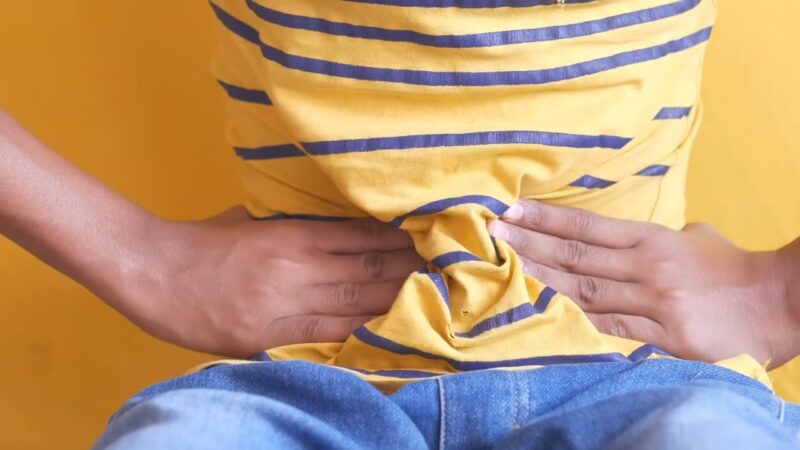Vasectomy is a widely used and dependable method of long-term contraception.
It involves cutting or sealing the vas deferens, the tubes that carry sperm from the testicles to the urethra.
Although rare, vasectomy recanalization can occur, where these incisions heal and reconnect.
The symptoms of vasectomy recanalization, its causes, and what men should do if they think their vasectomy has reversed itself will all be covered in this article.
Vasectomy And Recanalization
Before discussing symptoms, it’s essential to understand what a vasectomy is and how it works.
A vasectomy is a procedure where the surgeon cuts, seals, or blocks the vas deferens to prevent sperm from mixing with semen, rendering a man sterile.
This operation intends to be permanent.
However, in a small percentage of cases, the cut or blocked ends of the vas deferens may rejoin, allowing sperm to re-enter the ejaculate.
This rare occurrence is known as vasectomy recanalization.
Signs Of Recanalization

There are several signs of recanalization:
| Indication | Description |
|---|---|
| Resumption of Fertility | Partner becoming pregnant after vasectomy indicates potential failure. |
| Pain or Discomfort | Pain or discomfort in the scrotal area, possibly with swelling or tenderness, after vasectomy. |
| Return of Sperm in Ejaculate | Presence of sperm in ejaculate post-vasectomy is a clear sign of recanalization. |
| Changes in Semen Volume and Consistency | Reversion of semen volume and consistency to pre-vasectomy state might indicate an issue. |
| Frequent Ejaculation and Pain | Pain or discomfort during ejaculation post-vasectomy can indicate recanalization. |
Reasons For Vascetomy Growth
Understanding why a vasectomy might fail and result in recanalization is crucial for those considering this form of contraception or those who are experiencing symptoms post-procedure.
Here are the primary reasons for vasectomy growth:
Incomplete Occlusion
In some cases, the vas deferens, the tubes that carry sperm from the testicles to the urethra, are not entirely severed or sealed during the initial vasectomy.
This incomplete occlusion can leave a small passageway that allows sperm to pass through.
Over time, this can lead to the rejoining of the vas deferens, which may cause the vasectomy to fail and fertility to resume.
Natural Healing
The human body has a remarkable ability to heal itself, and sometimes this natural healing process can counteract the intended effects of a vasectomy.
After the vas deferens are cut or sealed, the body may attempt to repair the damage.
In rare instances, the severed or blocked ends of the vas deferens may spontaneously reconnect.
This process is known as spontaneous recanalization.
The body’s attempt to heal itself can inadvertently restore the pathway for sperm to mix with semen, leading to the return of fertility.
Scar Tissue Formation
During the healing process, scar tissue can form at the site where the vas deferens were cut or sealed.
In some cases, this scar tissue can create a small channel through which sperm can pass.
This channel, known as a fistula, can allow sperm to bypass the blockage, resulting in a return of fertility.
The formation of such scar tissue is a rare but possible complication of vasectomy.
Technical Errors During Surgery
Although vasectomy is a routine procedure, technical errors can occur.
If the surgeon does not correctly cut, tie, or seal the vas deferens, there is a higher chance that the tubes may reconnect.
Ensuring that the procedure is performed by an experienced and skilled surgeon can minimize the risk of such errors, but it cannot eliminate the possibility entirely.
Time Factor
The risk of recanalization is higher shortly after the vasectomy and tends to decrease over time.
However, even years after the procedure, there remains a small chance that the vas deferens can reconnect.
Monitoring for any signs of recanalization and regular follow-ups with a healthcare provider can help detect and address this issue early.
Signs Your Vasectomy Grow Back Together

Surgical Errors
During the vasectomy process, surgical errors, though rare, can occur. These mistakes might involve improper cutting or sealing methods, potentially leading to recanalization. Ensuring the procedure is done correctly by an experienced surgeon is crucial, but it’s important to be aware that such errors can still happen.
Delayed Sperm Clearance
After a vasectomy, it may take some time for all residual sperm to be cleared from the reproductive system. Some men may still have sperm in their ejaculate for a short period after the procedure as the body flushes out the remaining sperm. This is a normal process, but if it persists, it could be a sign of recanalization.
What To Do If You Suspect Vasectomy Growth?
If you notice any signs that your vasectomy may have reversed, it’s crucial to seek medical attention immediately. Here are the steps to take:
Semen Analysis
The first step is to get a semen analysis to check for the presence of sperm in your ejaculate. If the test shows sperm, it indicates that the vasectomy has potentially recanalized.
Consult Your Healthcare Provider
Based on the results of the semen analysis, your healthcare provider will advise you on the next steps. This might include further evaluation or additional testing.
Re-evaluate the Vasectomy
In some cases, it may be necessary to re-evaluate the vasectomy to ensure it is fully effective. This might involve repeating the procedure to achieve complete sterilization.
Taking these steps promptly can help address the issue and ensure that your vasectomy remains an effective form of contraception.
Regular follow-ups and monitoring can also help detect any changes early, providing peace of mind and maintaining the intended results of the procedure.
Alternative Contraception Methods
If vasectomy recanalization has occurred, you and your partner may need to consider alternative birth control methods, such as condoms, until the issue is resolved.
Consult a Specialist
If you experience discomfort or other issues related to vasectomy recanalization, it’s advisable to consult a specialist, such as a urologist. They can provide expert advice and recommend potential remedial measures to address the problem effectively.
Summary
While vasectomy recanalization is rare, it is a potential occurrence for some men.
Recognizing the signs and seeking prompt medical attention is crucial.
If you suspect your vasectomy has reversed, consult your doctor to determine the appropriate steps to take and ensure effective contraception.
Related Posts:
- How Does a Greenhouse Work? Everything You Need to Know
- Tapping Maple Trees for Beginners - Everything You…
- 10 Warning Signs Of Mold Toxicity To Watch Out!
- 6 Stages of Garlic Growth Every Gardener Should Know
- What Causes White Spots on Cucumber Leaves and How…
- Is Your Garden Just a Jungle? 10 Tips to Help You…









